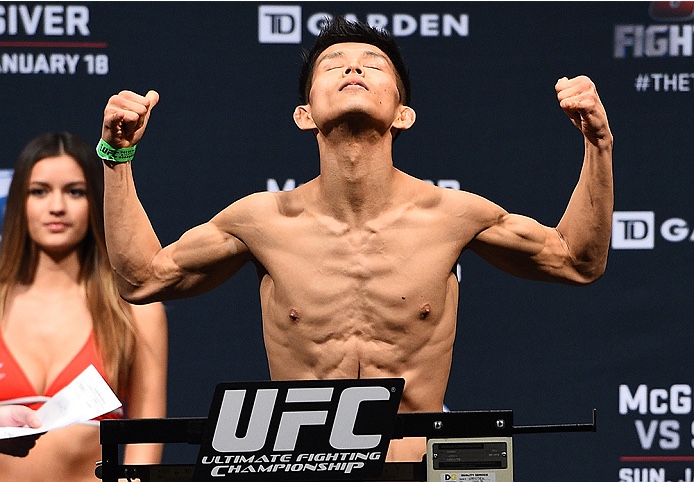No Season for MMA Fighters
How to stay in shape all year round?
In my opinion, on how to stay in “fight shape,” I need to state the obvious. You should never really let yourself get out of shape. I understand if you want to take a week off, drink a few beers, and crush some pizza after fight camp. That’s relatively normal. I wouldn’t suggest taking a month off, gaining 30 lbs
1. Preventative maintenance.
Invest the time to take care of yourself. Learn to manage your soft tissue through skillfully using foam rollers, tiger tails, and other self-massage like the Rogue supernova. The cost of these 3 items is the same as one 90-minute massage and will bring you months, if not years of use.
2. Maintain your strength
When it comes to strength training, the magic happens when your train around the 80% mark. This percentage is very manageable in a trained athlete and should keep you stable throughout the year. When you can always hit these numbers, moving up slightly in weight should be a viable option without having to worry about DOMS(Delayed Onset Muscle Soreness) and neural fatigue.
3. Focus on compound movements
Train the deadlift, pull-up, barbell bridge, horizontal press, and loaded carries on a weekly basis. It’s up to the fighter to determine volume, load, and intensity, but these exercises will get the job done. Keep the reps around 5 on most of these, and you should be set.
Remember, no one ever dominated someone in the cage by training with Bosu balls, ellipticals, and p90x. Stick to what has worked for the last 50 years and eliminate meaningless training.
4. Train at fight speed
You don’t get explosive through slow movements, circuit training, and long-distance work. Sure, the aerobic system plays a role behind the scenes, but you need to train explosively to be explosive.
The mistake coaches make is when every form of conditioning is HIIT based. You cannot develop power in a fatigued state. The key is to perform some lactic work in each session. I have great success at Skill of Strength by performing lactic capacity work at the end of the lift and beginning of conditioning.
There are several ways to train this way, including plyos, sprints, sled work, med ball throws, and battling ropes are just a few options that work very well.
5. Hire a strength coach that works with fighters.
For some, it’s the missing piece of the puzzle. I am familiar with strength & conditioning and have years of experience in self-training. However, as the day of the fight gets close, I should not be busy analyzing my conditioning and building strength programs by myself. Many fighters have no problem hiring a striking coach, BJJ coach, and wrestling coach. Then they go out and get their strength and conditioning from the internet. My suggestion is to hire a S&C coach with a good understanding of MMA.
-
2023
- Oct 29, 2023 Biohacker Summit Amsterdam 2023 Show Notes
- Sep 18, 2023 Biohacker’s Retreat September 2023
- Sep 4, 2023 Biohacker Summit London 2023 Show notes
- May 1, 2023 Biohacker’s Retreat April 2023
- Apr 13, 2023 Cheese and Your Health: The Impact of Fermentation, Type, and Production Method
- Mar 12, 2023 Fermentation Makes Processed Meat Different
- Jan 29, 2023 Eat “Cultural Heritage.” Osechi Japanese New Year’s Food
-
2022
- Dec 23, 2022 “Mirin” Sweet Rice Sake Beyond Seasoning
- Nov 7, 2022 Japanese Drinkable IV “Amazake”
- Oct 16, 2022 Biohacker Summit Amsterdam 2022
- Oct 2, 2022 Fermented Foods for Healthy Skin
- Aug 10, 2022 Fermented Foods for Immune System
- Jun 26, 2022 Fermented Foods for Health Optimization
- Jun 4, 2022 Biohacker Summit Helsinki 2022
-
2019
- Nov 9, 2019 Spartan race Boston at Fenway Park 2019
- Nov 2, 2019 Biohacker Summit Helsinki 2019
- Aug 14, 2019 Boston Super and Sprint Weekend 2019
- Jul 2, 2019 Viome
- Jun 7, 2019 Earth Runner
- May 15, 2019 BIO CBD plus
- Mar 17, 2019 Keto Mojo
-
2018
- Dec 10, 2018 Complete Nutrition with Bits
- Aug 12, 2018 First time Spartan Race
- Aug 1, 2018 keto box
- Jun 4, 2018 Mushroom Coffee
-
2017
- Dec 30, 2017 After Week 12
- Nov 26, 2017 Week 10 & 11
- Nov 13, 2017 Week 8 & 9
- Oct 30, 2017 Week 6 & 7
- Oct 13, 2017 Week 5
- Oct 6, 2017 Week 4
- Sep 29, 2017 Week 3
- Sep 11, 2017 Determination
-
2016
- Sep 11, 2016 REhydration Process
- Aug 13, 2016 SFG Level 1 Test
- Feb 21, 2016 Conditioning during Fight Week
-
2015
- May 29, 2015 Dropping a Weight Class
- Apr 10, 2015 Random Day of my Training
- Feb 10, 2015 No Season for MMA Fighters
-
2014
- Aug 27, 2014 Hit some Swings
- Jun 24, 2014 MMA Fight Prep 5
- Jun 23, 2014 MMA Fight Prep 4
- Jun 23, 2014 MMA Fight Prep 3
- Jun 21, 2014 MMA Fight Prep 2
- Jun 20, 2014 MMA Fight Prep 1











